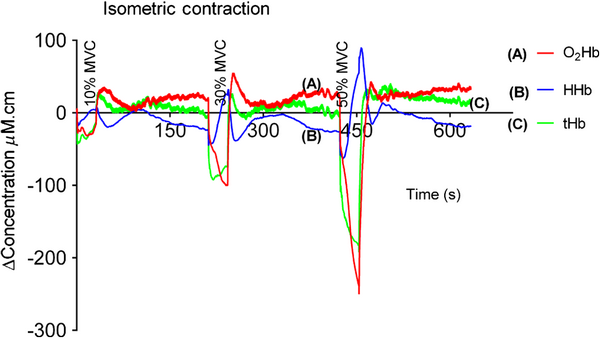A research article published 5 December describes a new light-based technology for measuring oxygen content in muscles while underwater, valuable information for competitive swimmers as well as patients using water-based therapies to recover from muscle injuries. Authored by researchers from the University of Essex and Artinis Medical Systems, the open-access paper appears in the current issue of the Journal of Biomedical Optics, published by SPIE, the international society for optics and photonics.
"This work has implications not only as a new way to monitor sports performance, but also as a way of tracking and optimizing rehabilitation using water-based therapies."
Swimmers looking to monitor and improve technique and patients striving to heal injured muscles now have a new light-based LED tool to help reach their goals. A research article by scientists at the University of Essex in Colchester and Artinis Medical Systems published 5 December 2014 in the Journal of Biomedical Optics (JBO) describes the first measurements of muscle oxygenation underwater and the development of the enabling technology.
 |
Design of the underwater near-infrared (NIR) spectroscopy. LEDs were used as a light source for detection. (All images courtesy of SPIE)
|
The article, “Underwater near-infrared (NIR) spectroscopy measurements of muscle oxygenation: laboratory validation and preliminary observations in swimmers and triathletes,” is published open access and appears in the current issue of JBO, published by SPIE, the international society for optics and photonics.
“There are limited methods available for real-time measurements of human performance underwater. This is especially true during dynamic exercise as occurs in sport,” said JBO Associate Editor Marco Ferrari, a professor in the Department of Clinical Medicine, Public Health, Environment, and Life Sciences at the University of L'Aquila. “This paper is the first demonstration of the use of near-infrared spectroscopy to measure muscle oxygenation in athletes during swimming. It has implications not only as a new way to monitor sports performance, but also as a way of tracking and optimizing rehabilitation using water-based therapies such as cold-water immersion therapy.”
Using spectroscopy, scientists can identify a material by deriving a unique chemical signature based on how the material interacts with light waves -- absorbing, reflecting, refracting, or otherwise altering various colors, or wavelengths, of light.
Near-infrared spectroscopy uses light waves from the near-infrared region of the electromagnetic spectrum, and is widely used in sensors for food and chemical quality control, in medical diagnostics such as blood sugar or oxygen analysis, or in monitoring brain or nerve functions.
 |
|
Electrical spectrums were used to detect oxygen concentration. |
Near-infrared spectroscopy is increasingly used in athletics, noted lead researcher Professor Chris Cooper, Director of Research Impact and Head of Research at the Centre for Sport and Exercise Sciences in the School of Biological Sciences at the University of Essex.
Technological advancements in device hardware and software, including new wireless, telemetric, and wearable devices, have made near-infrared measurements possible within a variety of field-based sports.
However, currently available portable devices are not waterproof, and the aquatic environment provides an exercise medium within which any physiological measurement is difficult to make.
The ability to monitor oxygen levels will provide swimmers with valuable feedback, and help ensure that working muscles have sufficient oxygen for sustained, strong performance and endurance.
“This work makes possible the measurement of peripheral muscle oxygenation changes in swimmers during aquatic exercise,” Cooper said. “Innovative modifications to existing swim apparel, such as modified snorkels, have led to the attainment of systemic measures of oxygen consumption. Now, the development of a waterproof near-infrared device will facilitate measurement of muscle oxygenation and blood flow in a previously inaccessible exercise setting.”
Co-authors with Cooper are University of Essex researcher Ben Jones and Marco Dat of the Dutch company Artinis Medical Systems.
The Journal of Biomedical Optics is published in print and digitally in the SPIE Digital Library, which contains more than 420,000 articles from SPIE journals and proceedings, as well as more than 200 eBooks. Abstracts are freely searchable, and an increasing number of full articles in the society's 10 peer-reviewed journals are published with open access. Approximately 18,000 new research papers, eBooks, and other publications are added each year.
Lihong Wang of Washington University in St. Louis is the journal’s Editor-in-Chief.













